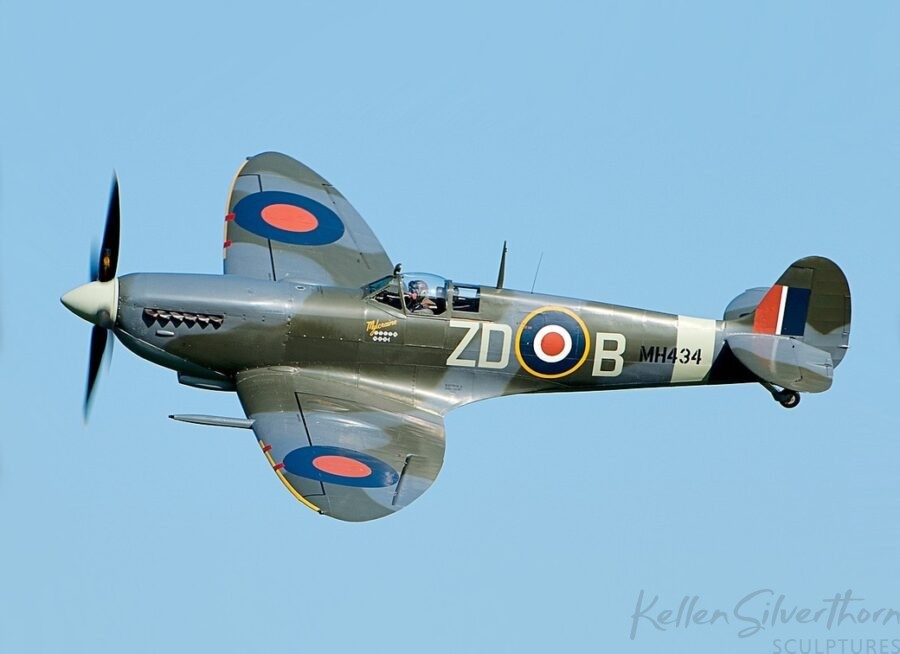Roundabout Menace – inspired by Jaguar’s Castle Bromwich
hover and click over individual sculpture photographs to enlarge

Tim Tolkien’s “Sentinel”. Photo Credit Wikimedia Commons
In my mind, Jaguar Cars and Supermarine Spitfires fighter planes will be forever linked. This is thanks to another sculptor, Tim Tolkien, as I starred at his ginormous public art installation “Sentinel”, within the roundabout outside Jaguar’s Castle Bromwich plant.
The locals have long christened the giant art installation “Spitfire Island”. It depicts three (abstract) Spitfires breaking formation upwards and outwards. Menacing. Warlike, but also graceful. Castle Bromwich, adjacent, turned out a total of 12,129 Spitfires during WWII.

Spitfire with iconic V-12 Merlin power. Photo Credit Wikimedia Commons
From the outside, the Castle Bromwich plant looked all of its 80 years of age. Inside, Jaguar’s production techniques were leading edge, with robotic-assembled aluminum automotive body construction, employing rivets and adhesive. To this day the memories still remind me of how Europe weaves the old and the new together. How much history there is everywhere you look, or step.
Jaguar is steeped in history. The zenith of that history is arguably the D-Type era, when Jaguar claimed LeMans victory three years running (1955-57). It doesn’t hurt that Jaguar has always produced attractive cars to look at, and the D-Type is no exception.

An ex-Works D-Type Jag. Photo Credit, Classic Driver
Typically, in my stone sculptures I’m introducing metal adornments as homage to my past work in metal. Since transitioning to stone sculpting, I’ve come around to embracing more-affordable copies of some stone originals, rendered in cast aluminum. The aluminum versions are produced by the Lost Wax Method. Roundabout Menace’s mold is pulled from my Troispetition D-Type work. The blue-green stripes on Menace are an homage to the Andes Blue Onyx featured in my stone B.S.C. D-Type piece.

D-Type in American Racing Colors. Photo Credit DriverSource (Tx)
Roundabout Menace captures the grace and aggression of both the D-Type, and the Spitfire. Beholding it transports me to that impactful June morning moment, outside Castle Bromwich, with Tolkien’s 52 ft tall Sentinel on Spitfire Island.

Tim Tolkien’s Sentinal, close up. Photo Credit Art UK



